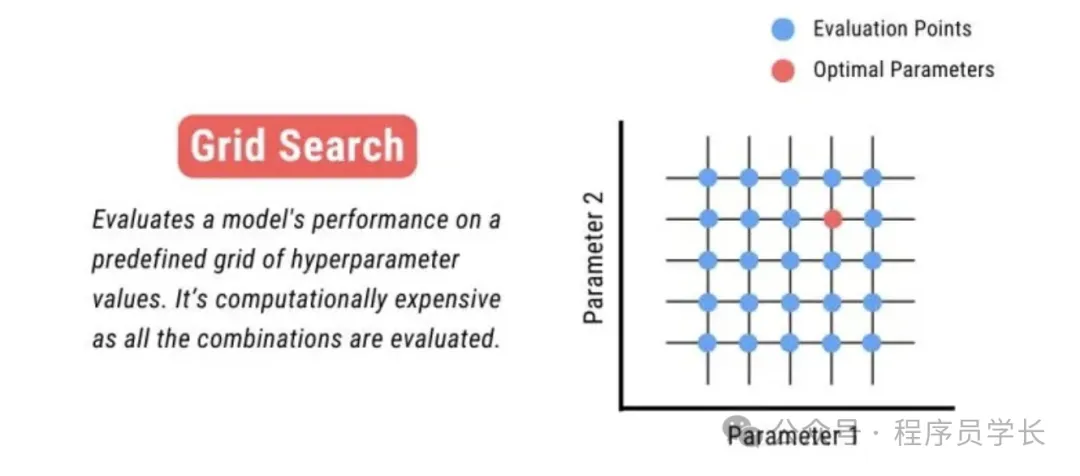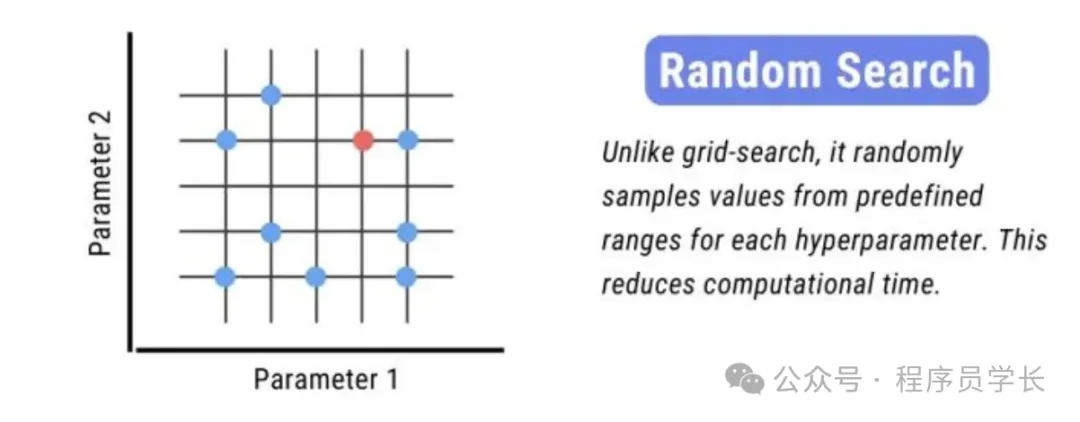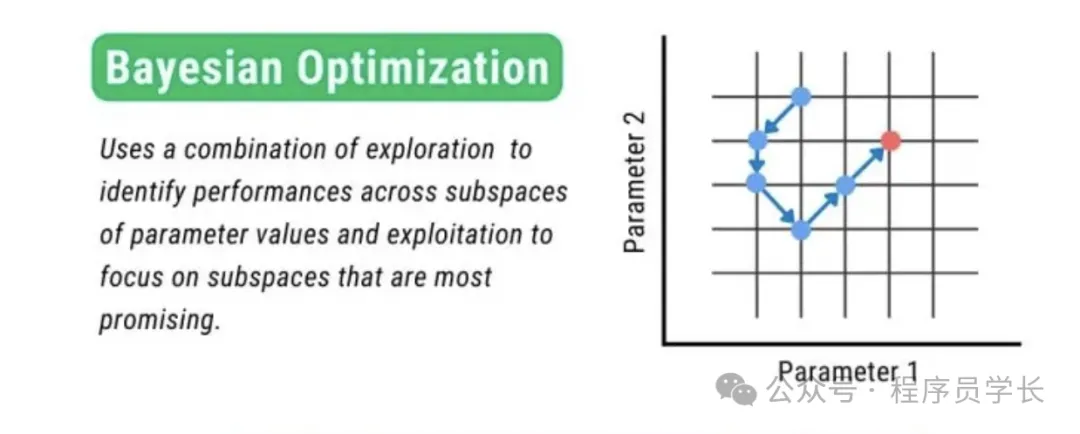超参数调优是机器学习和深度学习中重要的步骤,旨在选择最佳的超参数组合,以提高模型的性能。

超参数是那些在训练模型之前需要设置的参数,而不是在训练过程中自动学习的参数。
常见的超参数包括学习率、批大小、正则化参数、神经网络的层数和每层的神经元数等。

常见的超参数调优技术
1.网格搜索
网格搜索是一种穷举搜索技术,用于系统地遍历多种参数组合,以找到最佳的模型参数。
这种方法简单直接,但计算成本可能较高,尤其是当参数空间较大时。

优点:
简单易懂:网格搜索直观易理解,适用于参数数量较少时。
彻底性:可以保证在给定的参数网格内找到最优的组合。
缺点:
计算成本高:当参数空间大或者模型复杂时,计算成本非常高,因为它需要评估所有可能的参数组合。
代码示例
2.随机搜索
随机搜索不像网格搜索那样尝试所有可能的组合,而是在参数空间中随机选取参数组合。
这种方法可以在更大的参数空间内更快地找到不错的解。

优点:
高效:在大参数空间中比网格搜索更加高效,不需要测试所有可能的参数组合。
缺点:
无保证:由于其随机性,不能保证找到全局最优解,特别是在迭代次数有限的情况下。
结果的随机性: 同样的参数和设置可能导致不同的搜索结果。
代码示例
3.贝叶斯优化
贝叶斯优化是一种高效的全局优化技术,广泛用于机器学习领域中模型超参数的调优。
这种方法利用贝叶斯统计理论,通过构建一个代理模型(通常是高斯过程)来预测目标函数的表现,并基于这个模型进行决策,以选择新的参数值来测试。

优点:
高效且有效:在较少的函数评估次数内找到最优解,适用于评估代价高的情况。
适用于复杂空间:可以很好地处理非凸的优化问题。
缺点:
实现复杂:相对于网格搜索和随机搜索,贝叶斯优化算法的实现和调试更为复杂。
计算密集型:在每一步都需要更新代理模型,可能需要高昂的计算成本,尤其是在参数维度非常高的情况下。
代码示例
4.Hyperband
Hyperband 是一种基于多武装赌博机的优化技术,利用资源分配和早期停止策略来快速找到最优参数。
这种方法主要适用于需要大量计算资源的情况,如大规模深度学习模型训练。
优点:
快速且高效: 通过早期停止低效的模型来节省时间和资源,使得它在处理需要大量资源的训练任务时特别有效。
动态资源分配:可以更智能地分配计算资源,优先给予表现良好的配置更多的资源。
缺点:
依赖于早期表现:基于早期停止策略,可能会错过最初表现不佳但最终可能优化良好的配置。
实现复杂性:相较于其他方法,Hyperband 的实现更为复杂,需要对资源管理和调度有较好的控制。
代码示例
在这个例子中,我们定义了一个简单的神经网络,并用 Hyperband 算法来调整网络中的隐藏层单元数和学习率。
此外,我们使用了 Fashion MNIST 数据集来训练和验证模型。






还没有评论,来说两句吧...